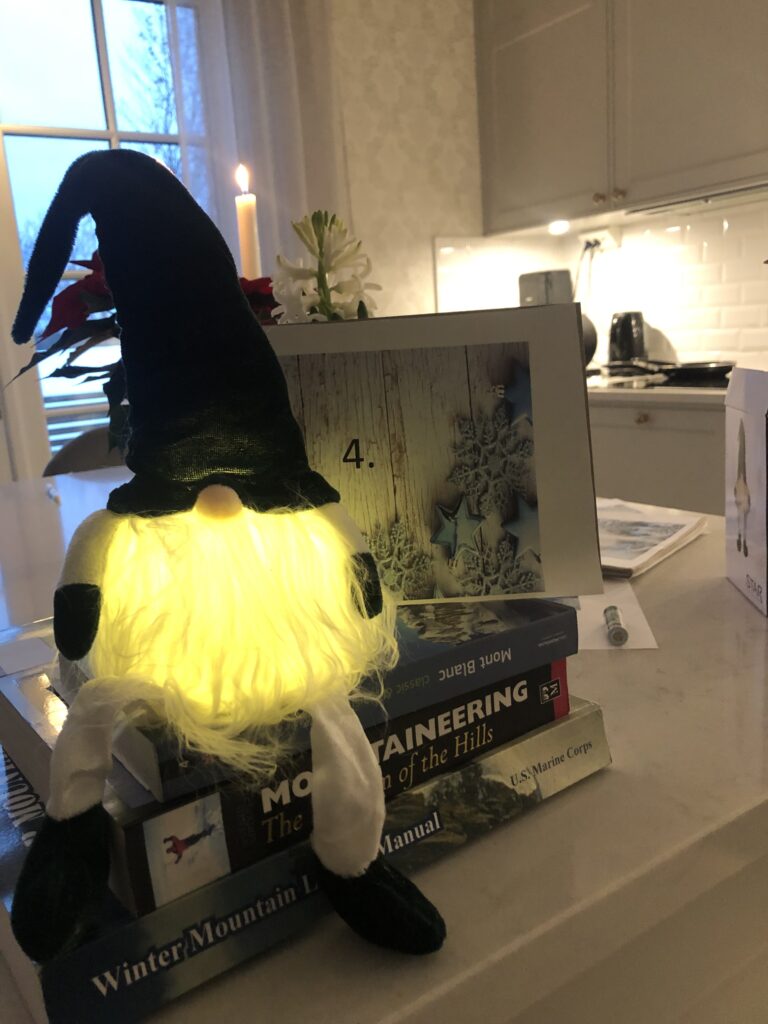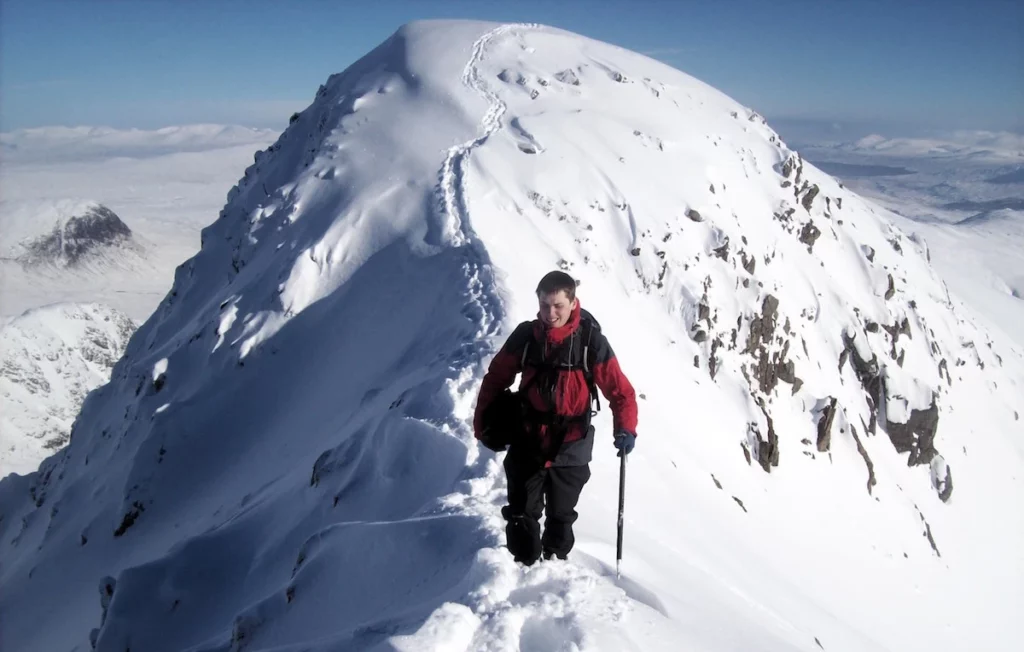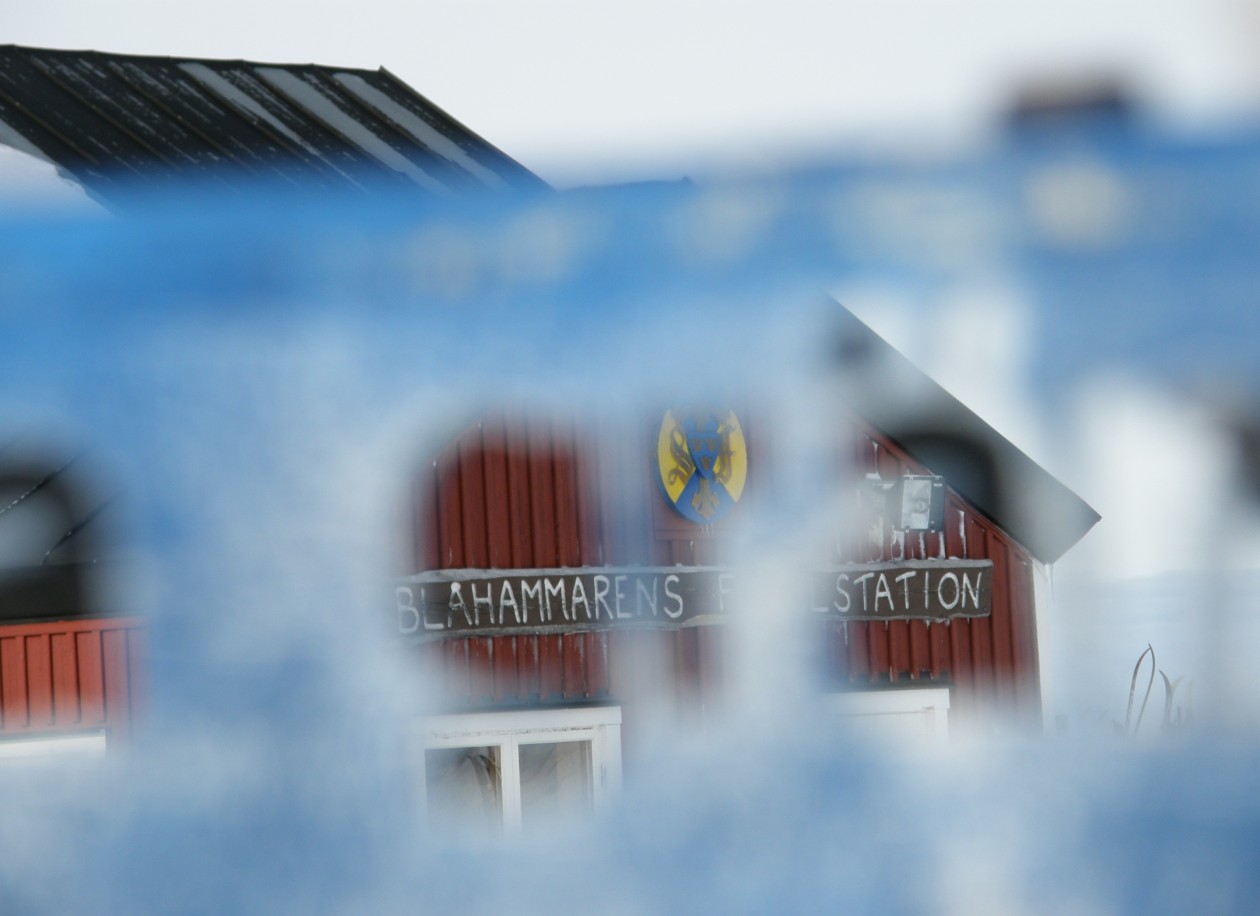
Today we will learn something more about the mountaineering skills. This are is quite wide, so it will not be all of it. First of clothing. Secure you got a good layer set-up. Wool of the first layer is important. This will help you to stay dry and warm. Next layer can be fleece or hybrid (prima-loft etc,) or even wool here as well. It can be good to add a vest and after that the shell-layer. Now you can put on/off regarding to the heat-and don’t get overheated. You shall also bring a down jacket for breaks and at the camp site. Wet means danger…The navigation skills you need to brush-up. No way around this one: navigation is more difficult in winter! With paths and topographical features often buried under snow, fewer daylight hours, and a higher chance of bad (or even zero) visibility, your navigation will have to be up to scratch. If your map-and-compass skills are rusty, consider getting some tuition – or just head out and practise with a knowledgeable buddy. Get comfortable with skills such as aiming off, handrailing, counting paces, and timing. It isn’t cheating to use a GPS and this is especially true in winter, when efficiency is important. However, it’s no substitute for having the core skills.
An important tip for winter navigation: don’t try to follow ridges too closely. Ridges often hide a ‘cornice’ (or overhanging lip of snow) on their leeward side, which can be difficult to see. A cornice may or may not support your weight, and it’s easy to think you’re standing on solid ground while in fact suspended only a foot or two over a massive drop. Give potential cornice areas a wide berth.
Weather. While important at all times of year, knowing the weather forecast is doubly important in winter when major snowfall could leave you stranded in a remote bothy – or worse. A rule of thumb often used by instructors is to let fresh snowfall consolidate for a couple of days before taking on a big route. Deep, fresh snow is hard to walk through and can lead to increased avalanche risk. Generally speaking snow consolidates (i.e. settles and hardens) more quickly later in the season, from February onwards, but both good and bad conditions can be found at any time of year.
Food and drink. It will be extra important to bring energy and liquid with you. The cold will eat significant more energy from you than usual. Bring a thermos with hot water or soup. Water is to prefer due to you then can chose what to ad. The, coffee or soup.

You also need to work, train and use all equipment you bring. Wind-shelter must be known how to use, ice-axe and navigation equipment.
Here follows some tips for navigation in bad weather conditions…1. Carry the right tools, and know how to use them. 2. Keeps tabs on your position. 3. Be aware of near hazards( such as steep or rocky ground, Scree, cornices, avalanche-terrain) 4. Be prepared and got plans for bad weather. 5. Know how to use bearing for navigation. 6. Trust your compass. 7. Use handrails. 8. Use GPS. 9. Measure distance with pacing. 10. Don’t panic, cool down there will be solution…
Mud – Lonely This Christmas (Official Video) – YouTube
See ya tomorrow…

This was truely a chapter for an upcoming book Bergman. Great skills to learn and to repeat.
Lets put it out into action on our upcoming mountain tour on friday.